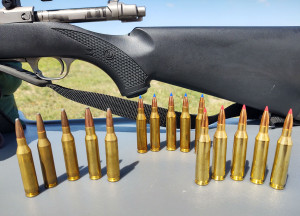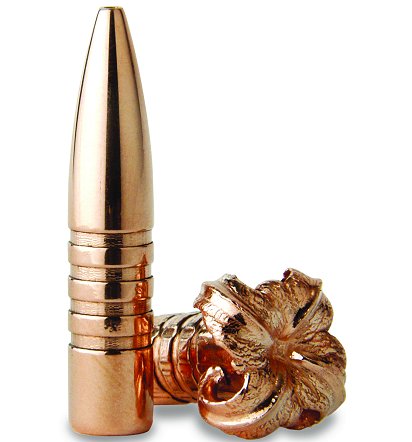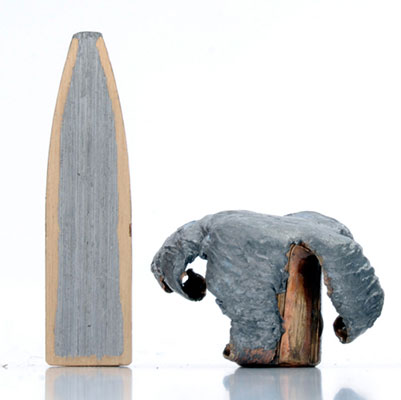Posted by J. Nesbitt on Jun 19th 2020
Choosing the Right Ammo for Your Whitetail Deer Hunt
Let’s be honest, you have likely carefully chosen your firearm, caliber, optics, accessories, scent control and several other components for your whitetail deer hunt. But please do not forget to use the same scrutiny to select the element of the hunt that ultimately completes the connection between you and your wary trophy animal, the ammunition! As important as a hunter scouting the best location and melding with their surroundings, so too is the combination of cartridge, primer, powder, and bullet married with a deer rifle to deliver a perfect balance of precision, penetration and expansion. Enough flowery intro let’s look at three leading schools of thought concerning selection of deer ammo.
Modern clean burning powders measured and manufactured to micro grain tolerances are available from several brands, although our friends at Hornady (another proud Nebraska business right down the road) are the clear leader. So as we think about ammunition selection, the bullet parked on the end of the cartridge really leaves a lot of room for consideration and is pretty much where we will focus for this piece.
MONOLITHIC (SOLID COPPER OR ALLOY) BULLETS
Several states (or units within states) require lead-free bullets for big game hunting. Please always consult the regulations for your state and specific hunting unit as part of your hunt planning. Or if you are concerned about residual lead present in the meat of your harvest, then lead-free ammunition is your solution.
Besides environmental or personal lead concerns lead free bullets are preferred by some hunters for their performance benefits. Terminal ballistics is where copper shines brightest, with projectiles maintaining over 90% of their original weight. This means deeper penetration, and mushrooms designed to cut substantial but not shocking exit wound channels, in turn leaving a significant blood trail (although typically not a long trail). The accuracy out to ranges typical in dense to moderately wooded whitetail deer habitat is still sufficient to place an ethical shot through the vitals. Because the weight retention is so high, but the velocity will be lower than its lead equivalent you should choose a slightly lighter bullet weight to balance these characteristics.
Barnes Bullets was one of the first to develop a monolithic solution with advanced external ballistics in their TSX (Triple-Shock X) line and have been paired with Federal to create an excellent choice for lead-free ammunition. Available in 18 calibers including 130 grains for the all-American .270 Winchester caliber found here.
TRADITIONAL LEAD CORE BULLETS
Since early hunters poured and smoothed lead round balls its still hard to beat the weight for performance and economics of lead-based bullets. And while not as aerodynamic as the most highly engineered modern bullets, the external ballistics are adequate to mid-range, and the terminal ballistics are devastating. In most cases the soft lead core is encased in a copper jacket which keeps the form intact through the explosion and spinning it takes to hurdle a projectile downrange to the target. Upon impact the copper begins to roll away allowing the lead to take on the familiar mushroom shape that will produce deep penetrating wound cavities. The fragmentation is significant with weight loss of 40% or more in some cases and no one wants lead fragments in their deer salami! So, with traditional lead-based ammo don’t overkill with velocity, which promotes the shredding (fragmentation) of the bullet. Place an ethical shot right through the vital zone where softer tissue in that part of a deer will be damaged plenty for a clean kill right in his tracks, but the lead in soft tissue will “mushroom” more than “shred” and be unlikely to make it into the table fare.
Remington’s classic CoreLokt is still one of the best whitetail deer bullets made and is available in over 50 caliber and bullet weight combinations. If you are a no frills, meat in the freezer, “shot him at 125 yards” hunter plain and simple then you should already be familiar with the 100 grains of CoreLokt in .243 Winchester caliber found here.
HYBRID SOLUTIONS
To round out the third course of this deer ammo meal for thought (spoken like a true king of the food chain), consider the techy advancements of modern ammunition manufacturing. This type ammunition combines the accuracy of target
round development with the terminal performance of time-tested hunting experience. Roots in the match bullet domain have introduced hunters to terms like a hybrid secant/tangent ogive shape, boat tails, ballistic coefficients (yes there is more than one!), and sectional density. And with those new developments primarily comes ethical shot placement at yardages your grandpa sure never considered. The simple meat-eater in the previous section will surely offer 600yards is unnecessary and not “hunting”, but that for another day.
Not that a hybrid round is not effective at shorter distances, which is exactly the point. Engineers are very deliberate about designing for every part of the shot. Inside the rifle barrel elements like pressure, twist, and harmonics are all considered to launch the bullet with the velocity and trajectory necessary to reach long ranges with precision. On the terminal end considerations are made to create both devastating shock, often by ensuring the jacket and core stay together deep into the penetration path, at short range and high velocity while also providing deep penetration with controlled expansion at long range and lower velocity scenarios.
This is the type of science and tinkering that used to fall almost only in a reloaders wheelhouse. However, each brand has now developed advanced hunting rounds. Again, at Nexgen Outfitters, we think Hornady is on the cutting edge and their Precision Hunter product line is the best balance of accurate and deadly performance for the price on the shelf. We have quick kills from 85 yards to 668 yards and almost everything in between. It performs as advertised across all 28 calibers we offer, although the wildly popular 6.5 Creedmoor caliber with 143 grain ELD-X (Extremely Low Drag Expanding) combination here is our favorite too!
A TEST OF ACCURACY
After the reading, data gathering and sharing experiences to put this together, we still felt like we needed some real-life controlled results to make sure everything we dug up held true. At some point soon we hope to have some ballistics media to play and test with, so check back for those results. But for now, we all have significant experience that a well-placed shot in the vital zone is still first and foremost in any hunting situation. So, we set off to the range on a calm day with the three rounds featured above to get live results. And really shouldn’t that be how every hunter approaches their individual firearm and hunting location set-up? Do your research for sure, but in the end try a few things through YOUR FAVORITE deer gun in a scenario that fits your hunt and pick the best fit for YOU. This will sound crazy, but if soft nose lead bullet ammo through a dirty barrel consistently hits the bullseye then that is YOUR recipe for dead deer.
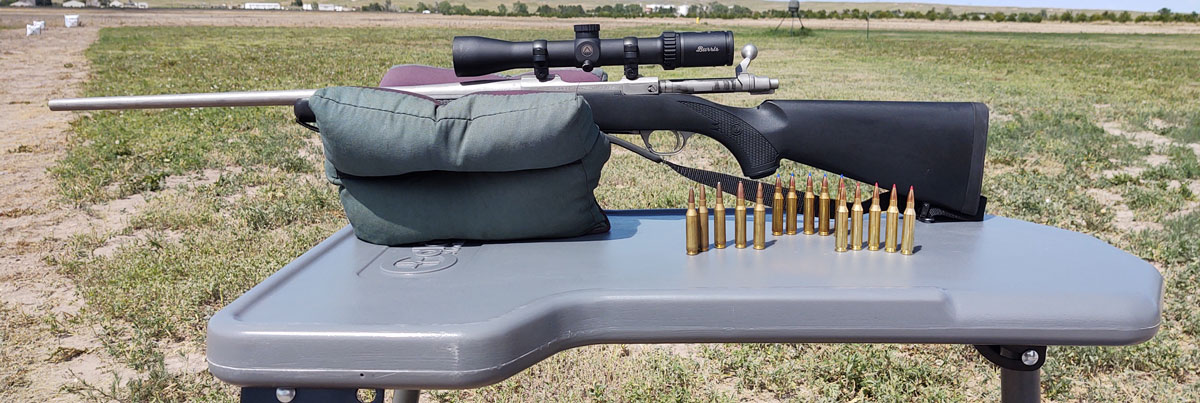
This test took roughly an hour and a half because we did allow the barrel about 30min to return to the ambient temperature between ammo types, so it is the perfect task for your next short range visit. Our set-up was a Ruger M77 Hawkeye with a stainless barrel in .243 Winchester and topped with a Burris Fullfield E1 3-9x40 scope; a classic deer gun with many kills to its credit. Shots were placed at 100 yards from a Caldwell Lead Sled Solo to eliminate as much human error as possible. The result picture tells the story and follows our research in this case.
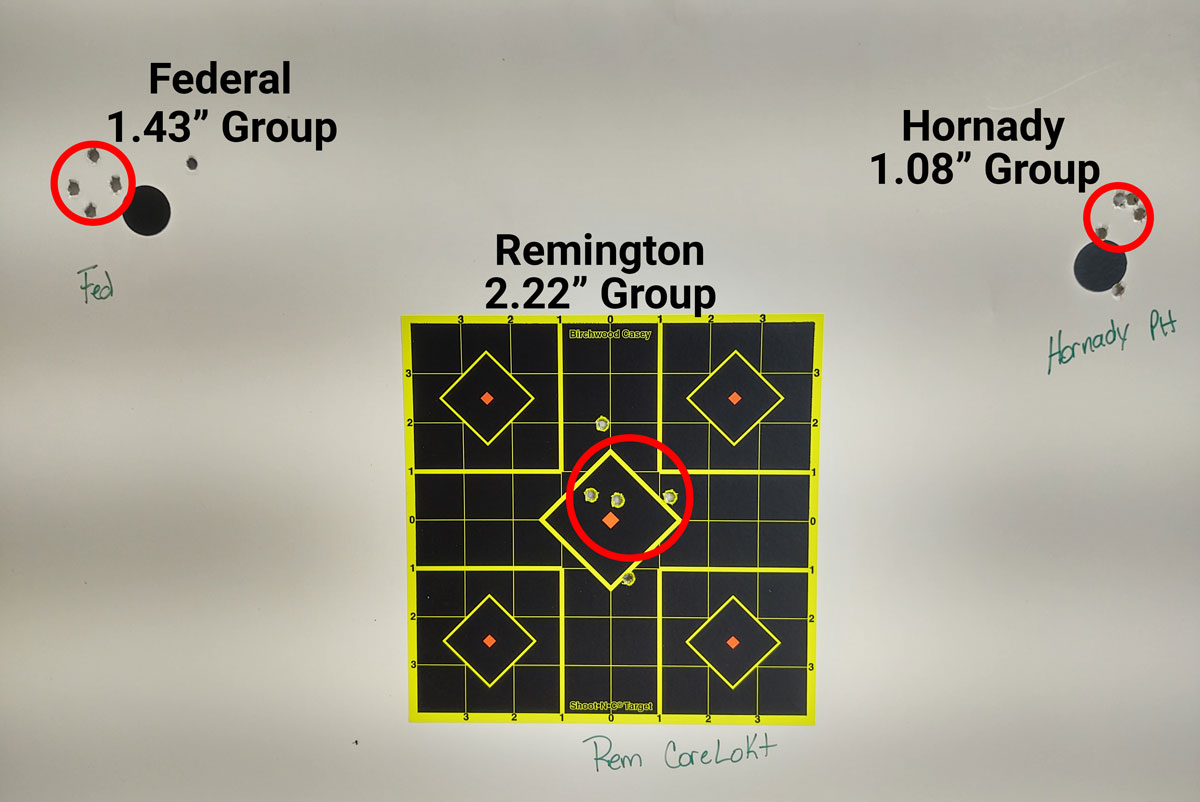
Federal Premium Barnes TSX .270 Winchester 130-gr
A 1 ½” group matches our research that a monolithic (copper) bullet does have sufficient external ballistics to be placed in the vitals out to a couple hundred yards. This will be our first place to play with ballistic media to examine the mushroom and damage path.
Remington Core-Lokt .243 Winchester 100-gr PSP
A 2 1/4” group also matches our research that a lead based round nose bullet is less aerodynamic but can still be placed accurately into the vitals past a hundred yards. Ballistic media would also be interesting to examine fragmentation in this scenario.
Hornady Precision Hunter .243 Winchester 90-gr ELD-X
A 1” (or basically 1 MOA) group (and much less with the first three truly cold bore shots nearly touching) finishes matching our research that our favorite deer ammo has superior external ballistics and could be placed into the vitals at 400 yards and more with appropriate practice.
Gather up your favorite deer hunting round along with a few new challengers from our selection of nearly a thousand center fire ammunition skus and spend some behind this season’s rifle to find which load you’ll carry to the field this fall.

